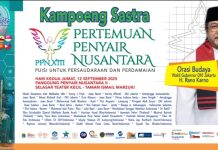Building upon the foundational insights from How Jazz Changed Music and Inspired “Lady In Red”, we now explore how these jazz roots have shaped the aesthetic and emotional qualities of modern romantic music. This evolution reflects a broader artistic journey—from intricate, improvisation-driven jazz to the minimalistic sincerity that characterizes contemporary love songs. Understanding this progression reveals how musical complexity is distilled into accessible forms without losing its emotional depth, making romantic music both profound and widely relatable.
The Shift from Jazz’s Complexity to Romantic Simplicity
Jazz, renowned for its sophisticated harmonies, improvisational solos, and rhythmic intricacies, prioritized emotional expression through technical mastery. Artists like Miles Davis and John Coltrane exemplified this, pushing the boundaries of musical language to evoke deep feelings of longing, joy, and introspection. As jazz evolved, its complexity served as a blueprint for emotional storytelling, inspiring subsequent genres to adapt and simplify these techniques for broader appeal.
In contrast, modern romantic music often emphasizes lyrical sincerity and melodic accessibility. The focus shifts from technical virtuosity to emotional authenticity—creating songs that listeners can easily connect with on a personal level. This transition is evident in the works of singer-songwriters like Ed Sheeran or Adele, whose compositions blend simple yet powerful melodies with heartfelt lyrics. Their success demonstrates how minimalism, when paired with genuine emotion, can resonate profoundly with audiences.
The Role of Minimalism and Lyrical Sincerity
Minimalism in modern romantic music is not merely an aesthetic choice but a strategic approach to amplify emotional impact. By stripping away complex arrangements, artists allow the core message—love, longing, vulnerability—to take center stage. For example, the sparse piano accompaniment in Norah Jones’s early recordings emphasizes her intimate vocal delivery, fostering a sense of closeness with listeners. This technique echoes jazz’s emphasis on expressive nuance but simplifies it for mass accessibility.
Lyricism also plays a crucial role. Contemporary romantic songs often feature straightforward, heartfelt lyrics that mirror jazz’s narrative storytelling but avoid elaborate metaphors. This creates an immediacy that enhances emotional connection, making the music a form of personal expression that can be both universal and deeply individual.
Balancing Technical Mastery and Emotional Authenticity
Despite the apparent simplicity, modern romantic music often involves a delicate balance between technical skill and emotional authenticity. Artists may employ sophisticated production techniques—layered harmonies, subtle rhythmic shifts, dynamic vocal phrasing—to craft a sound that feels both polished and genuine. For instance, Sade’s smooth jazz-influenced ballads showcase refined arrangements that serve the song’s emotional core, a testament to how technical mastery can enhance sincerity without overwhelming it.
This balance mirrors jazz’s own evolution, where improvisation and complexity serve to heighten emotional expression. Today’s artists often draw from jazz’s expressive techniques—such as vocal inflections and nuanced phrasing—to deepen the emotional resonance of their music while maintaining accessibility for a broad audience.
The Influence of Genre Fusion on Romantic Expression
Modern romantic music frequently incorporates elements from diverse genres—R&B, indie, electronic, and even jazz—creating rich, hybrid soundscapes that expand emotional and thematic possibilities. For example, Norah Jones’s blend of jazz, pop, and country demonstrates how genre fusion can deepen emotional expression and reach varied audiences. Similarly, artists like John Mayer integrate blues and jazz influences into their romantic ballads, echoing jazz’s improvisational spirit while maintaining lyrical simplicity.
| Aspect | Jazz Roots | Modern Romantic |
|---|---|---|
| Harmonies | Complex, extended chords | Simplified, accessible melodies |
| Improvisation | Central to performance | Rare, used for emotional emphasis |
| Lyrics | Narrative, often abstract | Direct, personal expressions of love |
| Performance | Technical mastery and spontaneity | Emotional sincerity, often minimalistic |
Impacts on Personal and Collective Identity
Just as jazz provided a voice for personal liberation and societal change, modern romantic music continues to shape individual identities and cultural narratives. Its emphasis on vulnerability and authenticity fosters a sense of community and shared emotion, reinforcing the idea that music is a vital tool for emotional expression and societal cohesion. This evolution underscores how musical styles adapt to reflect and influence the human experience across generations.
“From jazz’s improvisational depths to the heartfelt simplicity of today’s love songs, the journey of musical expression demonstrates a continuous striving to connect deeply with human emotion—an enduring legacy rooted in innovation and sincerity.”
Conclusion: The Cyclical Nature of Musical Innovation
The transition from jazz’s intricate artistry to the streamlined sincerity of modern romantic music exemplifies a broader pattern in artistic evolution—one that values both mastery and authenticity. This cyclical journey reminds us that innovation often revisits foundational principles, reinterpreted through contemporary lenses. As new technologies and cultural shifts emerge, they continue to inspire fresh expressions rooted in the emotional depths pioneered by jazz, reaffirming music’s timeless role in human storytelling.




